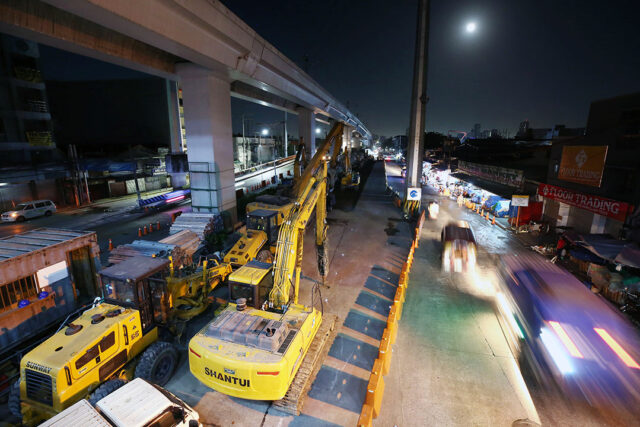The perks of realizing sustainable transportation
The evolution of transportation has been one of the hallmarks of human progress, facilitating the mobility of people, goods, and ideas around the globe. However, this advancement has come at a cost, with conventional transportation systems contributing significantly to environmental degradation, social inequalities, and economic inefficiencies. In response to these challenges, sustainable transportation has emerged as a way to reshape the future of mobility for the better.
According to the International Institute for Sustainable Development (IISD), sustainable transportation refers to the provision of services and infrastructure for the mobility of people and goods in a manner that is safe, affordable, accessible, efficient, and resilient while minimizing carbon and other emissions and environmental impacts.
Sustainable transportation promotes equality and economic development. Thus, the concept of sustainable transportation transcends beyond mere efficiency, as it envisions a holistic approach that harmonizes human mobility while rebuilding the future.
Environmental urgency
Traditional modes of transportation that rely on fossil fuels are significant contributors to air pollution, greenhouse gas emissions, and habitat disruption. According to a report from IISD, transportation is responsible for a majority of economic and social development challenges, accounting for 64% of global oil consumption, 27% of all energy use, and 23% of energy-related carbon dioxide emissions.
Transportation requires a significant amount of energy, much of which comes from non-renewable sources. This energy consumption contributes to climate change by increasing the demand for fossil fuels and other non-renewable resources. Fossil-fueled transportation emissions also create smog, soot, and other harmful air pollution.
Embracing sustainable options, such as electric vehicles (EVs) powered by renewable energy sources, significantly reduces greenhouse gas emissions. For instance, electric buses and trains, as well as bus rapid transit (BRT) systems, are found to be capable of carrying people more efficiently than cars.
Social equality
In urban areas, marginalized communities may have limited access to reliable, affordable transportation options. As such, people who do not have access to transportation, particularly in areas with limited transportation, may face difficulties accessing employment, education, healthcare, and other essential services. According to the 2020 UN Sustainable Development Goals Report, only half of the world’s urban population has convenient access to public transportation.
Higher-income groups typically have more transportation alternatives and easier access to stations, bicycles, bike lanes, and other modes of transportation. In contrast, people from low-income households are more likely to have restricted access to modes of transportation, which can exacerbate already-existing disparities and social exclusion.
Sustainable transportation aims to provide equal access to transportation options for all individuals, regardless of their socioeconomic status and background. The concept of sustainable transportation is to create an affordable, accessible, and convenient transportation system for everyone, reducing mobility disparities between social groups, as noted by the United Nations.
Creating transportation systems that promote gender equality requires a holistic approach that considers everyone’s needs, experiences, and challenges. Thus, sustainable transportation initiatives often prioritize safety and security in urban planning. According to the International Transport Forum, well-lit and pedestrian-friendly infrastructure can enhance the safety of women who may feel vulnerable, especially during evening hours.
Economic benefits
The country’s worsening traffic problem and the seen inefficiencies in the transport system have affected the economy. According to the Philippine Institute for Development Studies, Filipinos waste roughly P5.5 billion annually on traffic in Epifanio de Santos Avenue (EDSA) alone. This amount reflects the value of time lost due to delay, fuel costs, impact on health, and environmental destruction.
Promoting sustainable transportation modes, such as public transit, cycling, and walking, encourages a shift away from private vehicles. This approach reduces the number of cars on the road, alleviating traffic congestion and improving overall traffic flow.
The shift towards sustainable transportation and practices drives innovation and economic growth. Thereby, EVs, high-speed rail systems, and clean energy sources create new industries, job opportunities, and investments. According to a study by the United Nations Economic Commission for Europe (UNECE), greening the transport sector in the post-COVID-19 recovery could create up to 15 million jobs worldwide.
Reimagining mobility options
The traditional approach to mobility, centered around private car ownership and reliance on gasoline-powered vehicles, has led to various problems. Urban areas have traffic congestion, which wastes time and productivity and contributes to air pollution and greenhouse gas emissions. Additionally, the automobile-centric lifestyle has caused a disconnect between communities and increased health issues.
According to IISD’s report, sustainable transportation can be achieved through promoting low and zero-emission vehicles, developing sustainable infrastructure, optimizing transport operations and logistics, implementing transit-oriented development, and using sustainable transportation performance measures to evaluate the effectiveness of sustainable transportation initiatives.
The shift towards sustainable transportation offers benefits that extend beyond environmental considerations. Reduced traffic congestion leads to less time wasted in transit, improved air quality enhances public health, and increased reliance on active transportation modes promotes physical fitness. Moreover, sustainable transportation can stimulate economic growth by creating jobs in industries related to manufacturing, infrastructure development, and technology innovation. — Mhicole A. Moral














